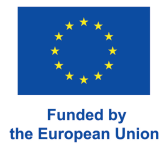Depictions of the Concentration Camps from Within
By Noga Stiassny
Barracks, a camp’s kitchen, piles of corpses, trees, SS officers, morning roll call, a bowl of soup, or the liberators – prisoners’ artworks provide a direct engagement with the everyday realities of survival and loss within the Nazi concentration camps. These artworks emerged under varied, and often extremely challenging, circumstances: created secretly during imprisonment at great personal risk; in the post-war years, when survivors were often discouraged from speaking openly about their trauma; or decades later, as survivors were finally able to reflect on their wartime experiences, which words alone often fail to convey; where language falls short, art steps in.

Although the term prisoner art may seem overly broad here, encompassing works created during and after the war, these pieces share a unifying thread: they were created by those who lived through the harrowing conditions of the concentration camps, with depictions of interior and exterior camp scenes among the most commonly recurring themes. Accordingly, prisoner art offers far more than meets the eye, conveying not only the physical setting but also the emotional and psychological spaces that shaped, and were shaped by, life and death within the camps.
It is true that these works offer a subjective and partial view of the camp experience – perspectives that may not always align with historical knowledge – but they are nonetheless invaluable; the ultimate acts of resistance, they defy the Nazi regime’s attempts to erase both lives and memories. Each painting or drawing reflects the conditions, emotions, and state of mind of the prisoner-artist at the time of its creation, even if indirectly. These works also frequently bear the imprint of the artist’s pre-war artistic training (or lack thereof), aesthetic preferences, personal biography, and social and cultural background (e.g., gender, age, nationality, religious affiliation). The materiality of the work and the chosen medium add further layers of meaning. At the same time, these artworks, as a group, assert the humanity of the victims in the face of genocide, often forging connections with other tangible and intangible manifestations of the camp experience.

Fascinatingly, however – with few exceptions, most of which involve art historians – research on these artworks tends to view them solely through the lens of testimony or trauma, often overlooking their place within a broader context, including material culture and heritage, art history, and the specific circumstances of their creation. What aesthetic language did the artist choose to convey what was seen or felt? How does the artist’s identity influence the content and style of the work? What materials were used, and how were they obtained? What are the differences between sketching on small scraps of paper under dire conditions or painting years later in the relative comfort of a studio? What role do colors – or their absence – play, and are people present or absent in the scene? What is left out of the painting, and how does it align with – or differ from – historical reality? Did the artist include an inscription or title, and why are many of the works undated? How do these works negotiate the tension between personal expression and collective experience?
Today, advancements in technology offer new opportunities to explore and engage with prisoner art, unpacking the complex narratives embedded within prisoner drawings and paintings. Digital tools allow us to zoom in on fine details, uncover hidden layers, and place these works within a multi-layered spacetime network, linking the artwork to other sources and artifacts.

Within the MEMORISE project, prisoner artworks are regarded as multifaceted (re)sources: historical documents, heritage objects, visual testimonies, and works of art that serve as innovative, multimodal entry points for engaging with the Heritage of Nazi Persecution (HNP). By integrating state-of-the-art technology, historical knowledge, and artistic exploration, these 2D images are brought into immersive 3D environments and other interactive digital forms, such as short videos, thus further contributing to the reconstructions of Kamp Westerbork and Bergen-Belsen. These digital applications serve as experimental platforms for exploring new storytelling techniques, offering accessibility beyond simple illustration. They transform the artwork into an indexical trace, part of a larger network of camp experiences, mediated through the creative process, both in the past and the present.
This approach enhances our understanding of the prisoner-artist’s biography and oeuvre, while simultaneously situating the artwork within the dynamic and evolving cultural and material Heritage of Nazi Persecution. As a result, the stories and memories embedded in these works continue to resonate with future generations in meaningful and impactful ways. Without these artistic fragments, the collective story of the Holocaust would remain incomplete.
Explore more:
- MEMORISE 3D Prisoner Artwork Explorer: https://memorise.sdu.dk/3d-prisoner-paintings/
- Hall C, Stiassny N, Grebe A, López Carral H, Kortholt B, Jänicke S. (2024). “Using Prisoner Artworks in 3D as an innovative multimodal entry point to engaging with Heritage of Nazi Persecution”, ADHO Digital Humanities Conference 2024: Reinvention & Responsibility, Washington, DC.



No responses yet